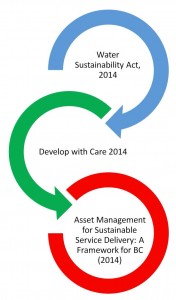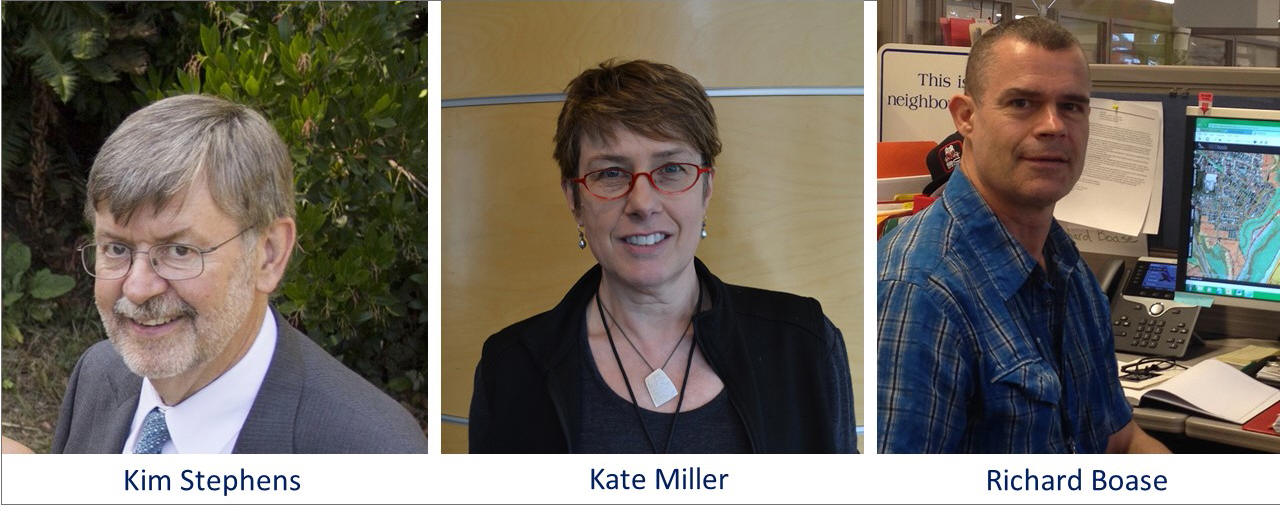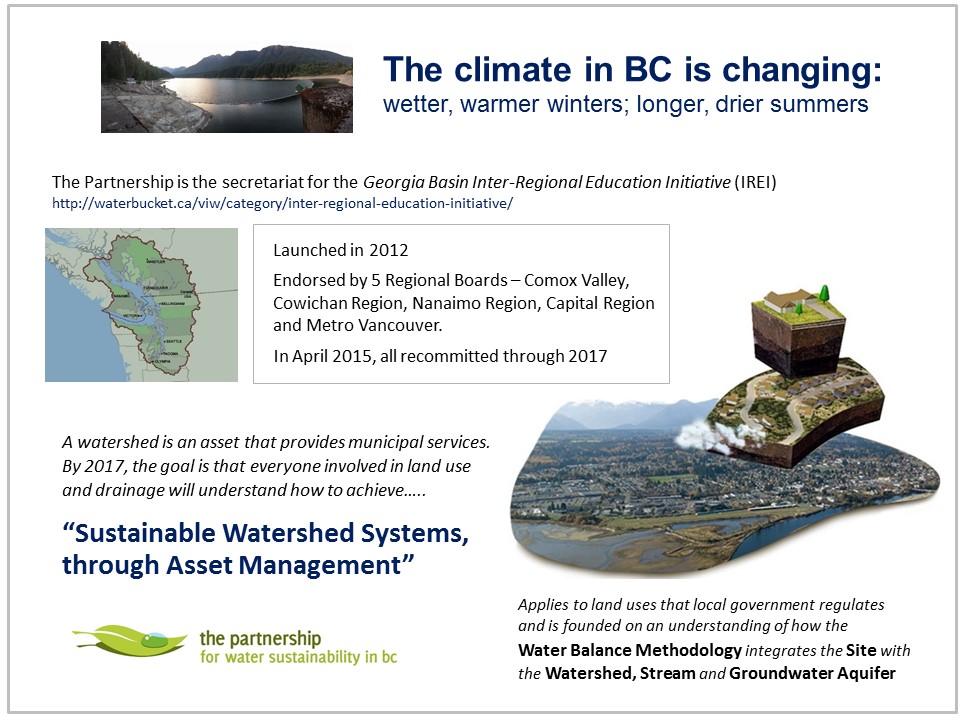ASSET MANAGEMENT BC NEWSLETTER (September 2015) – Feast AND Famine: Moving Towards “Sustainable Watershed Systems, through Asset Management”
Note to Reader:
Asset Management BC and the Partnership for Water Sustainability in British Columbia have aligned efforts to advance their shared vision for sustainable service delivery. The Fall 2015 issue of the Asset Management BC Newsletter included an article by the Partnership for Water Sustainability in BC.
Co-authored by Kim Stephens (Partnership Executive Director), Kate Miller (Cowichan Valley Regional District) and Richard Boase (District of North Vancouver), the article introduced the Asset Management BC audience to the concept of Sustainable Watershed Systems, through Asset Management.
The article was released at the 2015 Annual Convention of the Union of British Columbia Municipalities. Five weeks later, at the beginning of November, the Partnership released the guidance document titled BEYOND THE GUIDEBOOK 2015: Moving Towards “Sustainable Watershed Systems, through Asset Management”, the third in the series.
What Happens on the Land Matters!
Where a local government regulates land use, a watershed is an integral part of the drainage infrastructure assets of the local government. More specifically, the three pathways (surface, interflow, groundwater) by which rainfall reaches streams are infrastructure assets. They provide ‘water balance services’. As such, protection and maintenance of the three pathways has financial, level-of-service and life-cycle implications for asset management.
 Released in December 2014, Asset Management for Sustainable Service Delivery: A Framework for BC makes the link between local government services, the infrastructure that supports the delivery of those services, and watershed health.
Released in December 2014, Asset Management for Sustainable Service Delivery: A Framework for BC makes the link between local government services, the infrastructure that supports the delivery of those services, and watershed health.
The article provides context and describes why the BC Framework and two other provincial game-changers are drivers for Sustainable Watershed Systems, through Asset Management. It then introduces the ‘Water OUT= Water IN’ mind-map for looking at the Water Balance differently. Finally, the article enlightens how the Georgia Basin Inter-Regional Educational Initiative (IREI) would facilitate integration of watershed systems thinking and adaptation to a changing climate into asset management.
To Learn More:
Download Feast AND Famine: Moving Towards “Sustainable Watershed Systems, through Asset Management”



